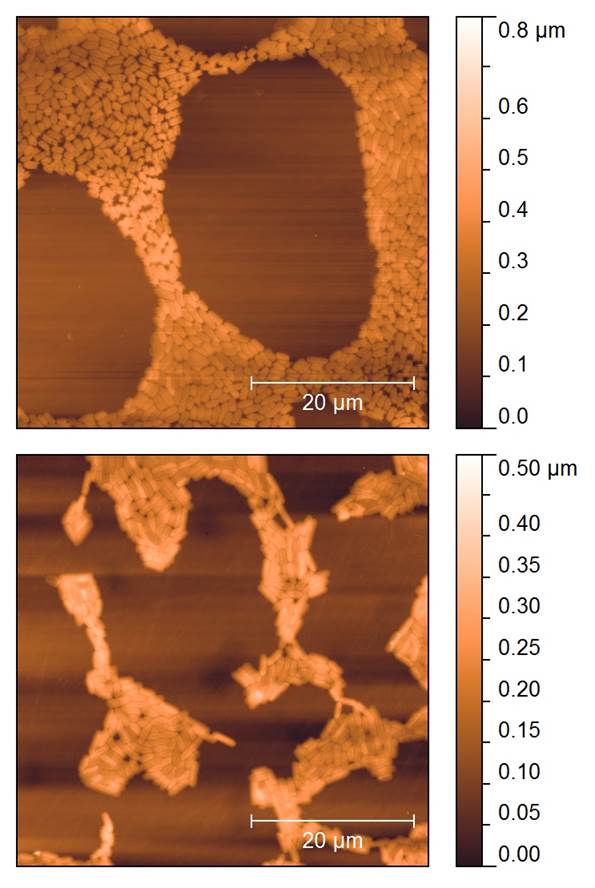Biofilms are
soft, largely organic, highly heterogeneous, self-generated, self-repairing
thin films comprised of macromolecules, inorganic ions, and living matter.
These films corrode petroleum pipelines and storage tanks, increase drag on
shipping vessels, and account for the majority of hospital-treated infections.
The mapping between microbial physiology and the material properties of biofilms
is complex, of considerable economic importance, and largely uncharted. To
date, physiology-biofilm
material property relationships have been of limited scope, focusing on the
effect of a few enzymes or differences between species and culture conditions. The
goal of this project was to define
the role of ATP metabolism in the
formation, physiology, and material properties of biofilms.
Using
computational and experimental approaches we found that efficient ATP
production and consumption are critical to biofilm
formation and morphology, suggesting that ATP metabolism may be an effective
anti-biofouling
strategy
[1].

Figure 1: AFM images of biofilms
from wild-type (top) and an ATP synthase
mutant (bottom), demonstrating that deletion of ATP synthase
leads to highly disordered biofilms.